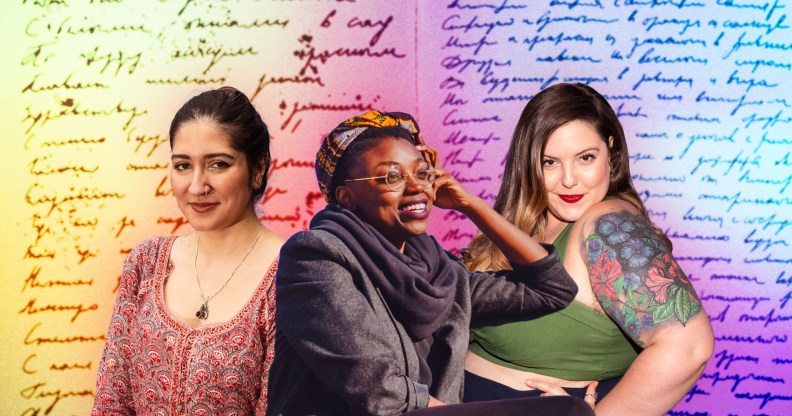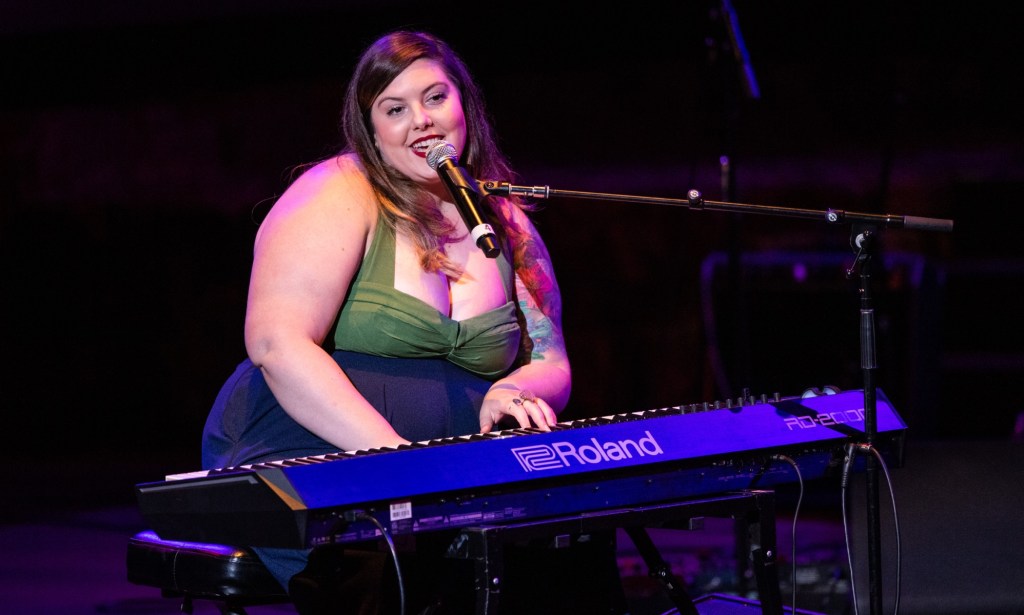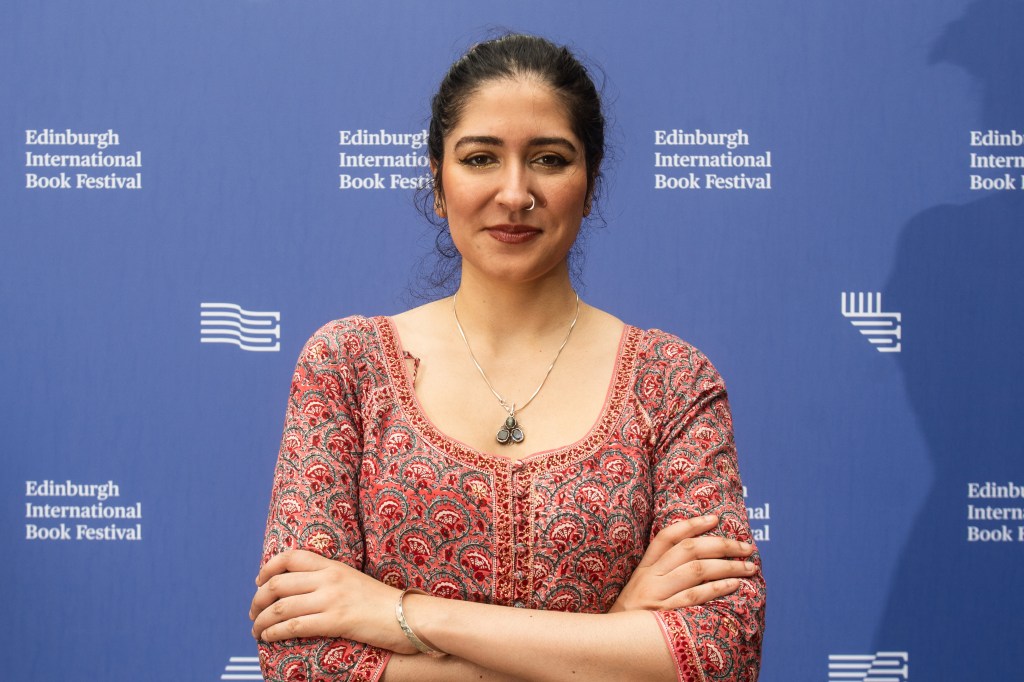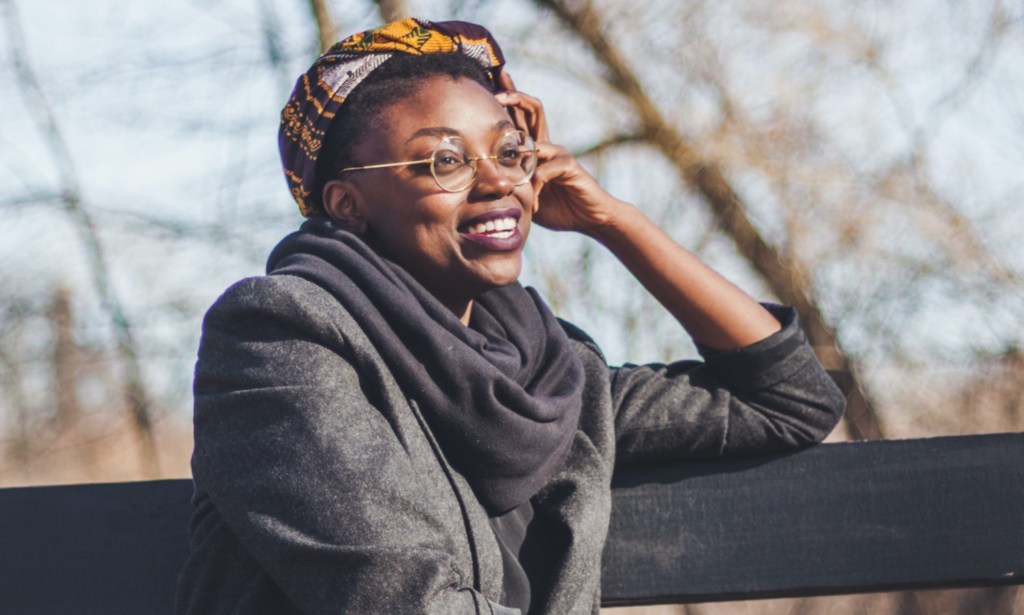Mary Lambert, Nikita Gill and Kemi Alabi on the legacy of queer female poets: ‘It’s the language of truth’

Mary Lambert Nikita Gill and Kemi Alabi on the legacy of queer female poets (Ally Almore/Getty)
Throughout history, great LGBTQ+ love stories have been passed down through verse, resulting in a powerful legacy for queer female and non-binary poets.
Since Sappho first spoke the famous notes of Fragment 31 over two thousand years ago, LGBTQ+ women throughout history have found a home in the shelter of poetry.
Whether you’ve found yourself in 16th-century lesbian Italian poet Laudomia Forteguerri, the love poetry of 17th-century Mexican nun Sor Juana Inés de la Cruz, or the works of African-American civil rights activist Pat Parker, we’ve only just beginning to uncover the wealth of queer female poetry that history has to offer.
Despite historians’ efforts to erase this strong LGBTQ+ legacy in poetry, from denying 19th-century American poet Emily Dickinson’s sexuality and brushing over the explicit queerness of World War One poets such as Siegfried Sassoon, to attempting to explain away Sappho’s poetry as a platonic admiration of women, there’s a growing counter-movement reclaiming the voices of queer poets throughout history.
With that in mind, we spoke to Mary Lambert, Nikita Gill and Kemi Alabi about how this enduring legacy has inspired a new generation of female and non-binary poets to proudly celebrate sapphic love.
Mary Lambert
Globally renowned singer and spoken word poet Mary Lambert is best known as the co-writer of Macklemore’s 2012 LGBTQ+ anthem “Same Love”.
Since then, she has crafted several deeply personal albums, including Heart On My Sleeve and Grief Creature, released a powerful poetry collection, Shame is an Ocean I Swim Across, and married her long-term partner Wyatt Paige Hermansen.
“The only classic poets I learnt about [growing up] were straight, white old men, I didn’t know there was a whole universe out there. I feel so passionately about the power of poetry and how much it’s shaped and changed my life.
“A little before my 18th birthday, I was probably the lowest I have ever been and I attempted suicide. There was this nagging feeling at the back of my head, saying: ‘You are meant to do something’. At 19, I was considering killing myself again when I entered a YouTube rabbit hole and found Andrea Gibson performing Blue Blanket and soon after that Shira Erlichman’s Daddy’s Parking Lot Sermon.
“Poetry can name the unnameable and what it feels like to be seen. Having a form of language that can speak to a complex identity is really powerful and that’s probably why so many queer women have been drawn to poetry throughout time.

“Being a queer woman is complicated and sometimes feels in opposition to the rest of the world. I think in all of queer female poet history there has been this feeling of ‘I know my heart is good’ and language helps us reconcile that.
“I was really motivated by how my spoken-word poetry affected other people. Strangers would come up to me and say I moved them or that I was a catalyst for their healing.
“That nagging for something more all those years ago when I wanted to die? Every time I performed, it was like an affirmation that the little voice was right.
“You don’t have to create chaos to be a good storyteller. I used to have this belief that I needed to be perpetually tortured to write well but that’s a lie. The fact that my poems are personal and about trauma, but also universal and resonate with people, should serve as a giant neon sign that says ‘people need help’.
“There are a lot of platitudes where people end up saying: ‘I want my work to make people feel like they’re not alone’. But I want there to be something beyond naming the unnameable.
“I want there to be action, I want there to be change. I want it to serve as a jumping off point to say ‘no one should ever feel this way’.”
Nikita Gill
Nikita Gill is a bisexual British-Indian poet and playwright who has released eight poetry collections since 2016, touching on race, sexuality, grief, mythology and identity.
Her work, including the best-selling Wild Embers, have connected with countless readers around the world, making her one of the most-followed poets on Instagram.
“The poet who really made me want to write poetry about loving women was Emily Dickinson. I used to do drama in school and we had to choose one historical figure who we identified with so I started to read about Emily Dickinson.
“I found her poems to her best friend turned sister in law [Sue Gilbert] about the ‘pearl of her breast’ and thinking ‘this was a woman very much in love’.
“I based my entire performance on Emily finding out that the woman she loved was going to marry her brother. The power I felt on stage telling that queer story, that’s the moment it all began for me.
“When I started writing queer poetry, I wrote about my own experiences as a sapphic. One thing that really upsets me is when I put something on the internet, people will change the pronouns without even realising.
“Sometimes I’ll come across a poem I wrote, addressed to a woman, and it will be addressed to a man. There is something quite insidiously violent about that and at the time I didn’t realise that was a micro-aggression.

“Me and my sapphic poet friends felt this pressure to not put love poetry out there because this was so hurtful and painful. I remembered what it was like being 15 years old and hiding these poems in my diary in a locked drawer.
“It felt like I was walking back into the closet when people took my work. There is such a journey you have to take as a queer writer that straight artists do not.
“One of the things that homophobia does is consistently erase people’s work. When these people take my work and change the pronouns, thousands of years from now others may find these edited versions and my identity will be erased.
“It’s probably what has happened to hundreds of queer artists along the way. It’s bitter-sweet but there cannot be a better time for reclamation than now. Writing The Girl and the Goddess was a very big move towards reclaiming for me.
“The important thing is to document your emotions and give it to the next queer artist. ‘Take this and know you are not alone’, that’s all we can say. And I think that’s what Sappho was doing when she was writing years and years ago.”
Kemi Alabi
Kemi Alabi is an award-winning Black non-binary poet living in Chicago. Their debut poetry collection Against Heaven was released in 2022, and their work explores topics of Black queerness, white supremacy and collective healing.
“Poetry and song were always intertwined for me. I’ve been writing poems since I was five years old, and some of them were songs I’d sing to myself.
“I’d read quirky children’s poetry anthologies and listen to so much R&B. Poetry is sound over line, so the sonic elements of poetry have always been at the forefront of my practice.
“Then there’s the ecstatic vocal performances I grew up around – from the gospel music of my Baptist church, to the R&B stars on the radio, to [Nigerian musician] Fela Kuti and the talking drums my father kept in the house.
“These vocal performances informed the sound, the style of my poetry, imbued with what Bettina Judd would call feelin: deep, internal, complex sensation. All worthy topics emerge from feelin.
Audre Lorde’s work saved my life and grounded my praxis in queer Black feminism. All of her prose – particularly her work on silence, the erotic, anger and poetry’s power – guides me.

“Then there’s June Jordan, whose work is committed to a radical politic that pushes readers from the page to the streets, from the page to their lovers – to an active and intentional participation with the world. Both poets collapse distinctions between the personal and political with distinct voices, full of power and life.
“I believe language shapes our world views, and silence is a weapon strategically deployed and violently maintained by those in power. It’s possible to obliterate people by erasing them from the collective imagination.
“It’s lonely and disorienting to live in a culture committed to ignoring or misunderstanding your experiences. As a writer, it’s my impulse to speak into those silences. First, to give myself a truer world to live in, then to find those who will live in that world with me.
“I think about what Zora Neale Hurston said: ‘If you are silent about your pain, they’ll kill you and say you enjoyed it’. Then Audre Lorde said: ‘I was going to die, if not sooner then later, whether or not I had ever spoken myself. My silences had not protected me. Your silence will not protect you’.
“Poetry fills the silence, not with endless argumentation or defence or explanation, but with feeling, with aliveness, with presence, with truth. Poetry and the act of writing are ways of being in the world.
“And that assertion of being allows us to move from death to life, from isolation to connection.”

